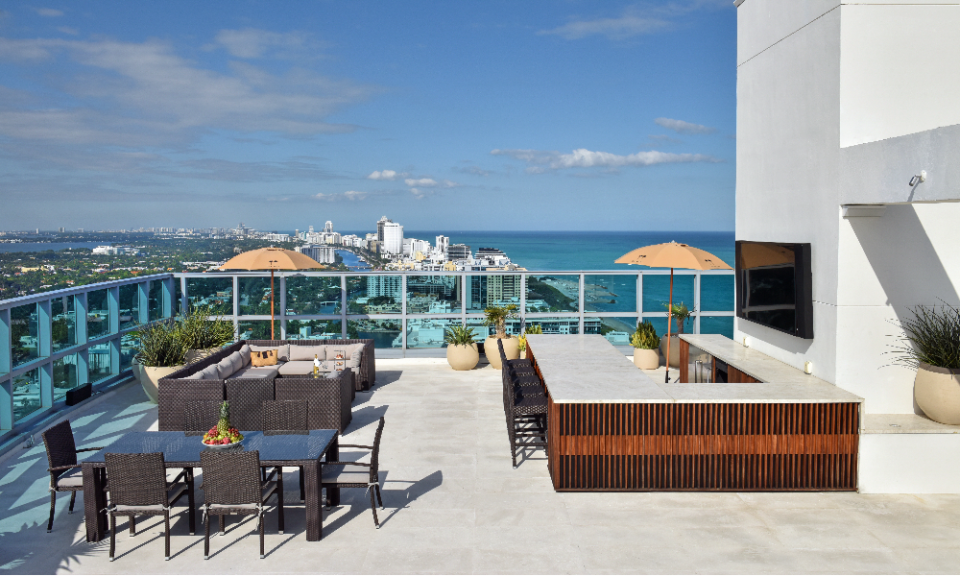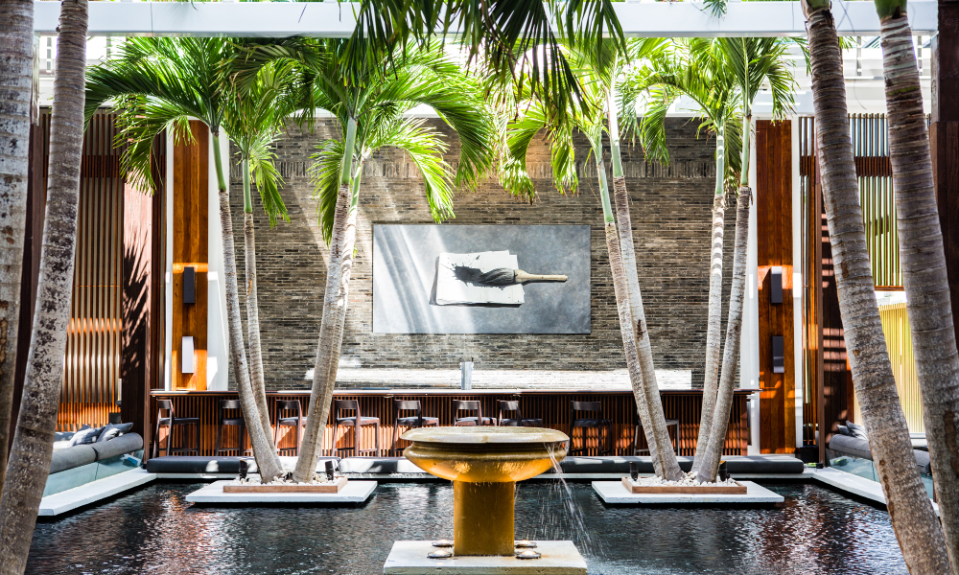Now’s the time to visit Miami, from art deco architecture to exciting new neighbourhoods

The South Florida city of Miami has more to see than ever, finds Louis Goss
Miami is booming. The South Florida city, once known as a haven for ‘snowbird’ retirees from New England and Canada, has taken on a new lease of life since The Dreaded P Word, in becoming a global business hub. A combination of lax Covid laws, low taxes, and sunny year-round weather has seen the beachside metropolis develop a new lease of life.
The newly renovated Setai Hotel on Miami Beach is emblematic of the city’s post-pandemic boom. The reinvigorated art deco hotel combines the glamour of old Miami with the ostentatious luxury the city is now best known for, in providing a feeling of modern decadence in the shell of one of the historic 1930s hotels that line Miami Beach’s shore. Externally, the Setai’s main building offers a sense of the old-world glamour on which Miami built its reputation. Inside, the hotel provides a sense of South East Asian luxury, with dark wood fittings, stone floors and Buddha statues along the walls.
The Setai itself sits at the centre of Miami Beach’s iconic Art Deco district, on the city’s pulsing Collins Avenue. The hotel’s three outdoor pools – all of varying temperatures because this is Miami and everything’s optimised – lie just seconds from the ocean, providing an escape from the daytime heat which blazes on the beach nearby The Setai’s suites offer prime views of Miami Beach’s waterfront from the vantage point of the hotel’s 38-story tower.

As one of the tallest buildings in the whole of Miami Beach, the high-rise acts as the prime location to look out into the ocean. The suites themselves offer everything a visitor might need, from a morning coffee to an ice-cold glass of champagne. Venturing out, Miami Beach – which is technically an entirely separate city from Miami – is a free-spirited paradise, full to the brim with restaurants, bars and hotels. The holiday resort city, which sits on its own island off the coast of mainland Florida, is particularly notable for its 800 examples of art deco architecture which reflect the city’s history as a 1920s holiday resort.
The architectural heritage is a result of a construction boom in the early-20th century that saw a coalition of Jewish architects fleeing an increasingly hostile Europe to transform the island, with the financial backing of highlevel mobsters seeking investment opportunities. This transformation turned the island from a mosquito infested swamp into the glamorous location that continues to attract America’s elite. A clever PR strategy from publicity chief Steve Hannagan is credited for subsequently building Miami’s reputation for salaciousness. This notoriety is summed up in the oftrepeated tagline “What happens in Miami, stays in Miami”. Miami Beach’s tolerance for topless sunbathing contributes to the effect.
Across the water to the mainland, the city of Miami itself is a bustling and fast-growing metropolis that is increasingly attracting America’s biggest businesses to its shores. The metropolis has come to be known as the “Gateway to the Americas” due to its huge Latin American population and its location as one of the USA’s southernmost major cities, which has seen it become a bridge from the North to the South. The Latin feel of the city, which largely considers Spanish its first language, could easily deceive a naïve visitor into believing they are actually in one of the tropical paradises to the South, if not for the 7/11s on every corner and the over abundance of high-powered muscle cars.
https://www.instagram.com/p/CbbVqFfLaJB/
The city is famously home to one of the world’s largest Cuban diaspora populations, who have set up their own Little Havana at its heart. The creation of the Cuban district came after those fleeing Fidel Castro’s revolution decided to set up new lives in America. The story is memorialized in the form of an ever-burning flame at the centre of Little Havana which acts as a tribute to the failed bid to overthrow Castro during the Bay of Pigs. To the south of Little Havana lies the downtown neighbourhood of Brickell – a glass and steel business district that is increasingly becoming home to some of America’s largest firms. The Brickell boom has seen an array of tech companies, law firms and top financial institutions set up offices in the area. The locale is probably best described as Florida’s version of Beverly Hills in sharing its penchant for cocktail bars, supercars and extravagant displays of wealth.
The district of Wynwood is a perfect example of the changes Miami has gone through. The artsy neighbourhood, once an industrial district, is now like Hackney Wick on steroids
Miami’s boom has however brought a tidal wave of gentrification that has hiked up rents and pushed local people out. One Uber driver, who had grown up in the city, recounted his struggles of even finding a decent place to live in Miami’s suburbs. The city has been transformed from the city of his youth, he said. The fast-gentrifying district of Wynwood is a perfect example of the changes the city has gone through. The artsy neighbourhood, once an industrial district, is now like Hackney Wick on steroids, with its abundance of chic bars and luxury flats. The area, which was once dubbed little San Juan for its Puerto Rican population, has become a hipster hub, and is increasingly becoming home to Miami’s tech scene.
Further afield, to the west of the city centre sit the beach-side locales of Coconut Grove and Coral Gables, which offer a taste of old money Florida within throwing distance of downtown Miami. The leafy suburbs offer a sharp contrast to the fast-paced districts, with their mangrove lined streets and opulent homes. Both offer an escape from the hustle and bustle, providing a wide selection of relaxed cafes and eateries a few minutes’ drive from the city centre. All in all, Miami is, more than ever, the place to be. The city offers a diversity that is unmatched elsewhere – a result of its unique ability to attract people from across the globe.
Louis was a guest of the Setai Hotel Miami Beach
Read more: The rise of Courmayeur: skiing in the Italian Alps
Read more: Buy this private Caribbean island with crystal blue waters for less than a London flat

 Yahoo Finance
Yahoo Finance 